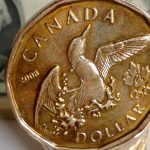To be successful, Forex traders strive to forecast the future based on the information they have in the present but, sometimes, the market can be even more unpredictable than it normally is. Every day is a new challenge to all traders out there and they have to pay attention to a number of things, including major economic events, central bank rumors, and even global politics. All this can result in substantial fluctuations in currency prices and often, lead to losing a huge portion of one’s balance.
Sooner or later an investor will eventually fail to recognize emerging trends and the market will start working against them. Losses are inevitable and traders need to learn to accept them. They can not control the market but they can take full control of the situation by applying risk management strategies. Cutting the losses in time is extremely important and Forex traders should know how to do it. The technique we will discuss in this article is called a “stop-loss” or a “stop-loss order” and it is among the most debatable topics in Forex trading.
What Is a Stop Loss?
Stop losses are automatic trading orders clients place with their Forex brokers to close a position once the asset reaches a particular price. They are offered through practically all trading platforms and are placed at the time of initiating a trade. Then, they can be modified at any time. This may sound like a complicated process to beginners but it is actually one of the fundamental principles of risk management in Forex trading.
In fact, stop-loss orders are an essential part of every trading strategy and once traders start using them, they will know exactly how much they stand to lose on a given trade. These options are designed to limit the trader’s loss on a position and are quite different from the conventional type of orders – the market orders. When placing a market order, traders specify the volume they wish to trade at the current price. They do not specify the duration or anything else, while with a stop-loss order, they determine the point, at which the position will be closed.
Let’s see a simple example that will illustrate how these stops work in an actual trading environment. We buy 1 standard lot of the EUR/USD pair at a rate of $1.15, expecting it to increase in price so that by the time we sell, we can make a profit. However, there is no guarantee that its value will move in the direction we hope for, which is why we place a stop-loss order. When we set our stop below market price – at a level of $1.1485, for instance, we make sure that even if the price falls, our losses would be limited to 25 pips ($1.1500 – $1.1475).
Importance of Stops in Forex Trading
The example above shows that stop-loss orders could be very helpful in limiting losses. However, similar stops are often used by traders for securing a profit, as well. Continuing with the example above, we have bought 1 lot of the EUR/USD at a price of $1.1500 and after a few hours, the rate has gone up to $1.1600, following our original prediction. This means that the asset we now own has appreciated but our profits are not yet realized. This will happen once we sell the lot at a higher price.
And this is where we can place a stop at $1.1560, which would protect more than half of our still unrealized profits. When the price starts falling down, we do not need to be in front of the computer to track it. Instead, the stop will trigger automatically at levels of $1.1560, sending a market order and closing our position. This way, we would make sure we make a profit of 60 pips.
This type of stop option is called a “Take-profit” option and is usually used in combination with the regular stop-loss. While stop-losses are set a price worse than the price of position opening or the price of pending order execution, take-profit options are placed at a price that is better than the price of position opening or the price of pending order execution.
It is important to determine the proper price levels for the stop-loss and take-profit options. Typically, novices are advised to set a take-profit at least as large as the stop distance so the potential loss of the trade will never be larger than the potential profit. In other words, they should aim at a healthy, long-term risk-to-reward ratio of at least 1:1. For better results, however, a risk-to-reward ratio of 1:2 is recommended – or, in this case, a stop-loss at 25 pips below the opening price level and a take-profit option at 50 pips above this price.
Such a strategy ensures that even if we lose more than half of our trades, we would still be making a profit in the long run. Of course, it is also important to properly choose the stop-loss level based on the size of our account, the price of the currency pair we trade and its volatility. We will explain these further below.
Types of Stop Loss Options
There are two main types of stop-loss options when initiating a trade, namely static stops and trailing stops. Of course, this would depend on the software platform used but most trading systems allow placing a static stop-loss, a take-limit option, and a trailing stop.
Static Stops
Static stops are the regular stops we have described above. Most novices start with setting static stops because they are quite simple to use and understand. When the price hits the stop-loss or take-profit threshold, the order to buy or sell is sent and the position is automatically closed. These options are a great risk management tool for beginners, especially if the stops are placed closer to the opening price. This way traders would make smaller profits but also keep the risk at the minimum.
Static stops can also be based on various technical indicators available in the trading platform of choice. Usually, this includes the Simple Moving Average (SMA), which tracks the average (the arithmetic mean) closing price for a specific time period. Another great indicator for Forex is the Moving Average Convergence/Divergence (MACD), which is used for indicating trends and measuring their strength. Many traders also rely on the Bollinger band or the Fibonacci retracement indicator to analyze the market, spot trends and follow them by placing static stops to their trades accordingly.
Trailing Stops
While static stops are very useful to novices who try different strategies and trading styles, more experienced traders usually opt for trailing stop-loss orders. These stops remain at the same place when the price moves against the trader, limiting the potential losses of a bad trade. While in this scenario, they work exactly like static stops, they are quite different in case the price movement is favorable to the trader.
When the price shifts in the expected direction, the trailing stop-loss triggers and it moves with the price. In other words, the stop trails the price action. Following the example from above, open a long position on the EUR/USD currency pair at $1.1500 with a trailing stop-loss option at $1.1485 and a take-profit level of $1.1550. This means that we start our trade with a stop-loss of 25 pips below the opening price, while the take-profit option is at 50 pips above that initial price.
After a while, we check our position and notice the price has gone up to $1.1525. We also notice that the two stops have also moved in the same direction – while the stop-loss is at $1.500 (the same as the opening price), the take-profit is at $1.575. Although both have gone up, they remain at the same distance from the price action – 25 and 50 pips, respectively.
Stop Loss Methods and Strategies
There are no set rules for how to place a stop-loss option when trading Forex pairs. However, traders should follow a certain strategy or have some method when determining the correct levels for the stop-loss and the take-profit. Calculating the exact stop could be difficult for novices, as they would try to account for different factors such as the volatility of the market, the risk they are willing to take, and many more. It would be wiser to select one method and stick to it if it proves to be working well for you.
Percentage Stop
One of the fundamental ideas in Forex trading is to always take the risk into account when opening a trade. A good rule to follow is to never risk more than 1% or 2% of your account per trade. However, leverage directly affects the pip value and while risking 25 pips on a $100,000 position as in the example we have been using so far seems quite reasonable, it may also lead to huge losses if we use excessive leverage. The leverage used in Forex is an important factor since it increases the potential profits and risks from a trade.
For instance, let’s see the pip value for the US dollar so that we have a better look at the EUR/USD pair – 100 pips equal $0.01 and 10,000 pips equal $1. So, for a standard lot size of $100,000, pip value is $10 ($100,000 x 0.0001). However, we have opened the $100,000 trade using 100:1 leverage on a $1,000 account. To calculate the risk, we can use the following formula:
Stop Loss x Leverage / 100% = Risk
If we set the stop-loss option at 25 pips, we have 25×100 / 100% or 2500/100, which is a 25% risk. In other words, with this stop, we risk 25% of our account or $250. An even easier way to calculate it is to multiply the pip value ($10) by the number of pips of our stop loss (25) – $250. To get a low risk for our trade, we need to use much lower leverage. Let’s see how the risk would decrease if we trade with only 5:1 leverage – 25*5 / 100 = 125/100, which is 1.5% risk.
Volatility Stop
Another method for determining the stop-loss is to set it based on the price volatility, i.e. on how much the price tends to move in a given time. Daily traders would look at the daily averages to calculate the best stop-loss levels for them. This can be done by using one or more technical indicators that track volatility.
The idea is to know the usual fluctuations in the price every day or during busy hours, etc. Of course, traders can use this technique in conjunction with other methods.
Chart Stop
A more complex strategy for setting the stop-loss option may be if we base our decision on what the charts are showing. Once again, traders must understand trends and be able to analyze the market through the data available on charts. Depending on the software platform that they use, they may have access to different charts with more detailed data and more built-in indicators and tools.
Time Stop
There is one more way one could calculate the proper level of the stop-loss option in an open position and this is the predetermined time of the trade. When we initiate a trade, we may not specify a duration but we know how long we want the position to remain open – the market’s active hours (the Forex market is open 24 hours a day from Monday through Friday), within a limited trading session, etc.
For instance, if we trade the EUR/USD currency pair, we should not trade it for a long time since the pair is quite active and we should be more conservative with the stop-loss level if we intend to keep our position open for a long time. Minor pairs such as EUR/CHF are not associated with such dramatic movements, however, so we should adjust our stop accordingly. Note that such positions keep the equity locked and a margin tied up that could affect other, more exciting trades.





